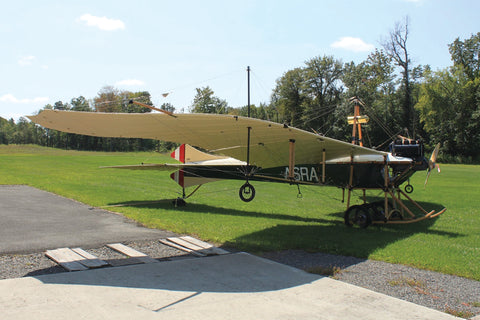
This Was History’s First Bomber. This Guy Made A Replica.
The Austro-Hungarians had
relegated the Etrich Taube to a training role by the end of 1914 (David Trost,
MD–Old Rhinebeck Aerodrome). (David Trost, MD–Old Rhinebeck Aerodrome)
Mike Fithian approached his re-creation of a 1912 Etrich Taube with compulsive workmanship and attention to detail. That’s because he wanted to build a faithful representation of the airplane his grandfather had flown in World War I.
He succeeded.
Robert Eyb was a pilot in the tiny Imperial and Royal Austro-Hungarian Air Service during the run-up to World War I. When his maternal grandson sought a building venture, Fithian recalled a photograph he had seen of Grandpa Eyb and his airplane.
The original Taube was not designed as a warbird, for it first flew in 1910. When it did go to war, it achieved notoriety as the world’s first bomber, after an Italian Army Taube in 1911 dropped several grapefruit-size grenades on Bedouin troops in Libya who were allied with Turkey during the brief Italo- Turkish War. (See “The Father of Aerial Bombardment,” May 2022.) Just days earlier, on October 23, Captain Mario Piazza reconnoitered the enemy for about an hour in a French Blériot XI, making that history’s first heavier-than-air “warbird.”
Since Taube is German for “dove,” many assume that the airplane’s bird-like planform indicates the designer’s inspiration. In fact, the wings are patterned after the seeds of the Javan cucumber tree, which burst from pods high in the trees and propagate after gliding for long distances. Austrian engineer Ignaz Etrich applied the principal to his primitive, wing-warping design.
Some think of this airplane as a Rumpler Taube, because another Austrian, Edmund Rumpler, made some minor changes to the design—such as replacing the castering four-wheel crosswind landing gear with a pair of conventional wheels—and named the result after himself. Easygoing Etrich didn’t bother to defend his patent; before long, his unlicensed design was being cranked out by 14 different companies, including Rumpler’s.
Fithian’s Taube is currently based at Old Rhinebeck Aerodrome, the famous upstate New York vintage-airplanes site, where it will occasionally take to the air on gentle-weather days for the amazement of summer-weekend visitors.
This article appeared in the Autumn 2022 issue of Aviation History. Click here to subscribe.
